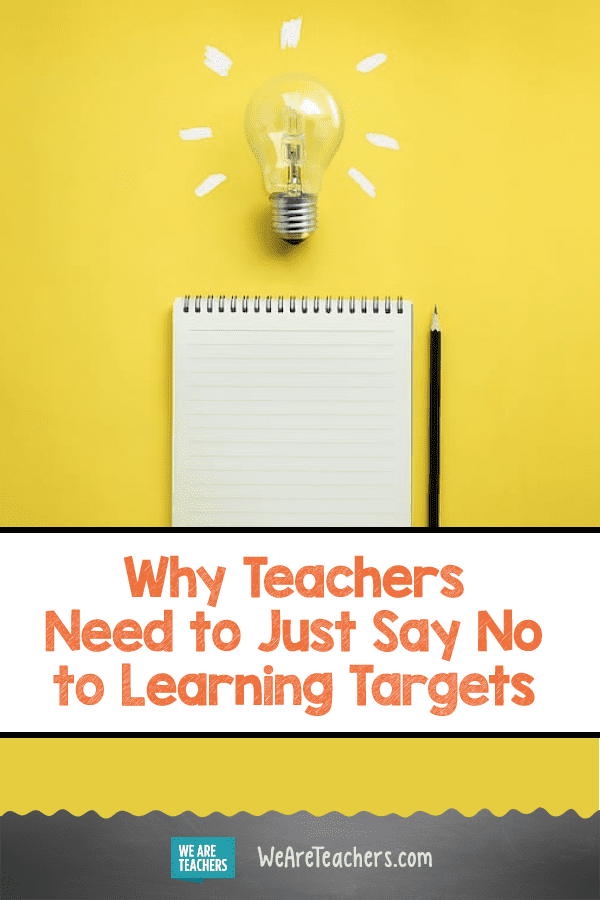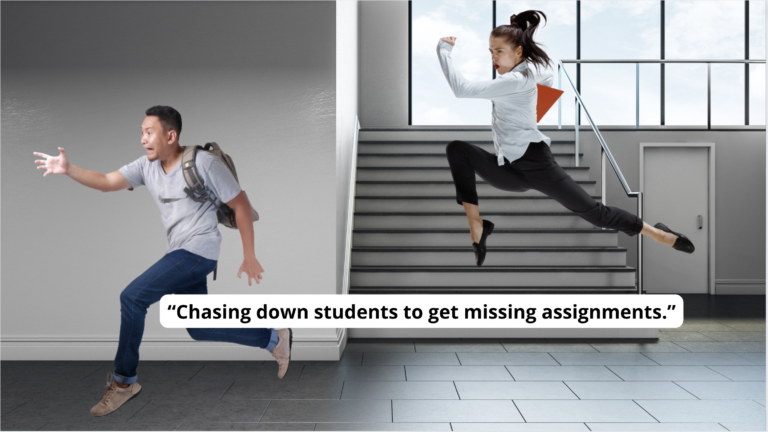Office Space: “Hello, Peter. What’s happening? Listen, are you going to have those TPS reports for us this afternoon?”
School version: “Hello, Ms./Mr. _____. What’s happening? Listen, are you going to have those learning targets posted this afternoon?”
While you picture your administrator wearing Bill Lumbergh’s red suspenders and peering creepily over your desk, ask yourself how often you answer that question with an assertive “no.”
In theory, learning targets provide a map of where we’re going in class, of what students are expected to know and be able to do. While well-intentioned, it’s off the mark. We’re failing to remember what it’s like to be a kid in a classroom. Learning targets play into a top-down power structure instead of bottom-up learning. They don’t foster engagement, and they’re meaningless without buy-in.
Top-down design
Growing up, if we had a good teacher, we knew where we were going without being told by a learning target. My best teachers had a gift of making expectations and goals clear. My worst teachers, on the other hand, didn’t know where they were going, let alone where they were trying to lead us. If my 10th grade history teacher had posted a learning target, it wouldn’t have changed his class. We still would’ve taken turns reading from the same dull history textbook, we still wouldn’t have done any activities, and we still would’ve spent the majority of the hour silently scheming how to remove his toupée.
In a top-down, highly static manner, learning targets are another way to disseminate information to students without really letting them be a part of the process. What if there was another way?
Bottom-Up Engagement
I worked for a principal who had a saying: You have to keep the main thing the main thing. And what’s the “main thing” in our line of business? Kids. A simple way to bring kids deeper into the teaching and learning process is to ask higher order thinking skills questions:
- Why are we doing this activity?
- What’s my goal?
- How does this connect to what we’ve been doing?
- Why are we doing X instead of Y?
Structuring a classroom this way puts kids in the driver’s seat; it makes kids analyze their own learning, and it doesn’t take long. I like to ask these questions when I introduce a new type of activity in class, and then the next time we do a similar activity, they’re already on board and understand why we’re doing it.
If we take this approach instead of simply posting learning targets, students gain the opportunity to understand their class, their teacher, and their own learning. This creates a buy-in which we can then parlay into further student engagement.
But what if?
So what if kids don’t know why they’re doing an activity? What if they can’t explain the goal or the connection to prior learning? Then it’s time to swallow our pride and reevaluate what we’re doing and how we’re doing it. Sometimes it’s an issue of not being clear, of not explaining well enough and losing students along the way. But we need to be open to the possibility that if our students can’t articulate the answers to those questions, then maybe we shouldn’t be doing what we’re doing. Asking higher order thinking questions is best practice in any discipline or grade, and the responses let us know if we’re using appropriate methods to reach our students. Learning targets, on the other hand, don’t allow for feedback to improve our practice.
Just say “no”
Each time a “Lumbergh” asks about my learning targets, I confidently explain that no, I don’t use them because I don’t think they’re best for kids. Then during observations I invite them to see what I do instead and how I invite the students into the process. If we can articulate why a different way achieves a similar, appropriate goal but in a more student-centered way, we can safely bet that we won’t be asked to “go ahead and come in on Saturday” to work on our learning targets.
What is your take on learning targets? Come and share in our WeAreTeachers HELPLINE group on Facebook.
Plus, things teachers do every day that are a complete waste of time.


